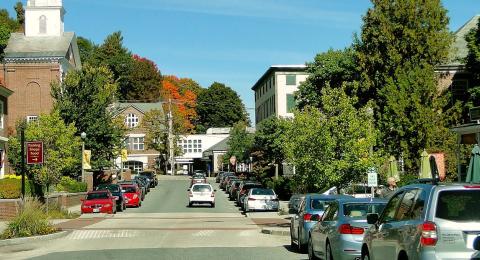Building ADU Buy-in with Danica Melone of Peterborough
I would be lying if I didn’t disclose that this blog post is meant to encourage you to connect with other people in your area, to collaborate! One of the big lessons I’ve learned in this work is that it takes teamwork, between different organizations working at various levels, to make a difference. This, too, is an important part of community engagement, along with engaging taxpayers and voters.
In my own attempt to collaborate, I asked Scott Slattery, UNH Extension Community & Economic Development Field Specialist in Hillsborough County, what I should know about in his area. “You’ve got to talk to Danica,” Scott told me. “She’s doing some really cool things out in Peterborough." And so, I did.
Danica Melone is Peterborough’s Director of Planning and Building, and she told me that Peterborough has decided to pursue ADUs (Accessory Dwelling Units) as a key part of the solution to their housing challenges. According to Danica, they have a limited number of buildable lots but lots of room for infill within their central village district. This means that ADUs are uniquely suited to increase the number of units in town. They are also helpful because an ADU that is a rental can provide income for a fixed-income household, increasing housing affordability measures for both the people living in the ADU and those renting it out.
When we think about developing new housing, people often think of companies clearing large areas of land to build apartment buildings or suburban neighborhoods. ADUs, however, require individual landowners to take the leap of faith to actually build them, people who may never have been landlords before to take on renters, and people who may never have lived in an ADU before to decide to try it out. This has the advantage of allowing dispersed control over the development between many people in town. However, it also has the challenge of finding funding, since the funding that often supports large housing developments is not available to homeowners who want to add an ADU to their property. To address these challenges, Danica described different tactics they’ve taken in Peterborough.
The town hosted a seminar with a local bank, Bar Harbor Bank and Trust, to educate people on the financing options around ADUs. Danica told me the bank had later scheduled consultations with people who attended the meeting.
In addition, Peterborough is fostering an environment in which people who are interested in building, ADUs or otherwise, can come into the town office and talk to staff about their plans, to learn what’s required and what they need to do to turn their dream into a reality. This type of philosophy is a shift, and Danica highlighted that it takes time to build trust because people in the community need to see that the staff are truly there to help them. Danica reported that, after each of their ADU info sessions, participants had reached out to the town about their ideas for adding ADUs to their property.
Another possibility percolating in Peterborough is an ADU tour, which would take participants on a bus ride to see the different ADUs that already exist around town. One of the challenges to convincing homeowners to build an ADU is that, if they’ve never lived in or visited a house with an ADU before, they don’t know what it would be like. A tour would allow potential ADU builders to see how ADUs are constructed on different properties, as well as various options for ADU usage: an in-law apartment, rental, or extra space for a college-aged child to come home. Peterborough is hoping to schedule a tour this spring.
Finally, Danica told me that she and the town’s Affordable Housing Committee were dreaming of recreating a successful Bay Area event: a regional ADU design competition. This dream is now being launched in conjunction with their Regional Planning Commission. It will involve local builders, architects, designers, and materials. It will also allow local towns to work together to create ADU templates that meet the requirements of all their zoning and building codes, easing the design process for homeowners and developers. This, in turn, will lower costs associated with ADU construction because pre-approved designs mean planning boards can abridge the process for applicants, eliminating or reducing fees.
As spring is coming and the snow is clearing, this article is your sign to think about who you could collaborate with to meet your goals, both within and beyond your municipality.

